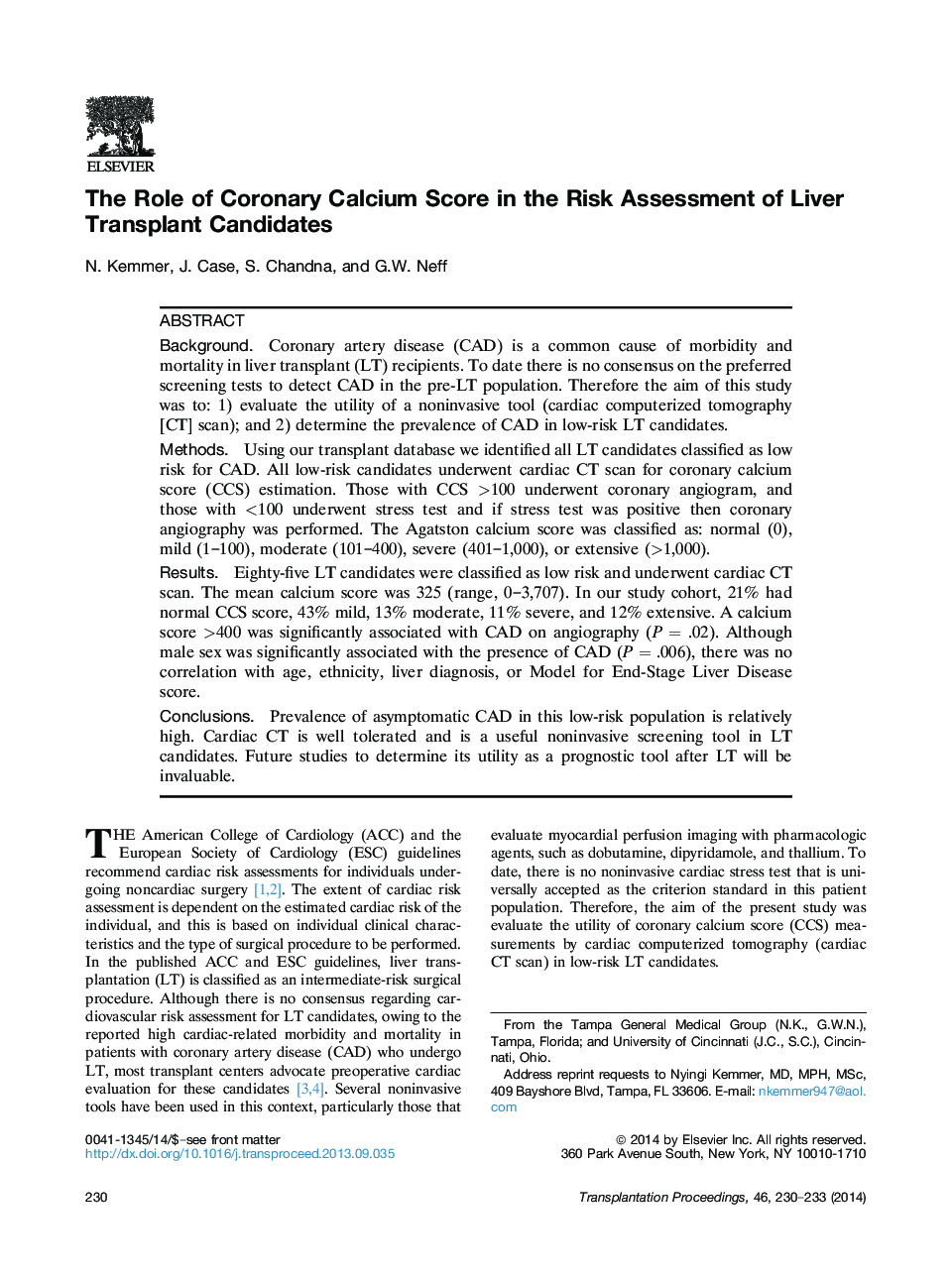| Article ID | Journal | Published Year | Pages | File Type |
|---|---|---|---|---|
| 4256773 | Transplantation Proceedings | 2014 | 4 Pages |
BackgroundCoronary artery disease (CAD) is a common cause of morbidity and mortality in liver transplant (LT) recipients. To date there is no consensus on the preferred screening tests to detect CAD in the pre-LT population. Therefore the aim of this study was to: 1) evaluate the utility of a noninvasive tool (cardiac computerized tomography [CT] scan); and 2) determine the prevalence of CAD in low-risk LT candidates.MethodsUsing our transplant database we identified all LT candidates classified as low risk for CAD. All low-risk candidates underwent cardiac CT scan for coronary calcium score (CCS) estimation. Those with CCS >100 underwent coronary angiogram, and those with <100 underwent stress test and if stress test was positive then coronary angiography was performed. The Agatston calcium score was classified as: normal (0), mild (1–100), moderate (101–400), severe (401–1,000), or extensive (>1,000).ResultsEighty-five LT candidates were classified as low risk and underwent cardiac CT scan. The mean calcium score was 325 (range, 0–3,707). In our study cohort, 21% had normal CCS score, 43% mild, 13% moderate, 11% severe, and 12% extensive. A calcium score >400 was significantly associated with CAD on angiography (P = .02). Although male sex was significantly associated with the presence of CAD (P = .006), there was no correlation with age, ethnicity, liver diagnosis, or Model for End-Stage Liver Disease score.ConclusionsPrevalence of asymptomatic CAD in this low-risk population is relatively high. Cardiac CT is well tolerated and is a useful noninvasive screening tool in LT candidates. Future studies to determine its utility as a prognostic tool after LT will be invaluable.
